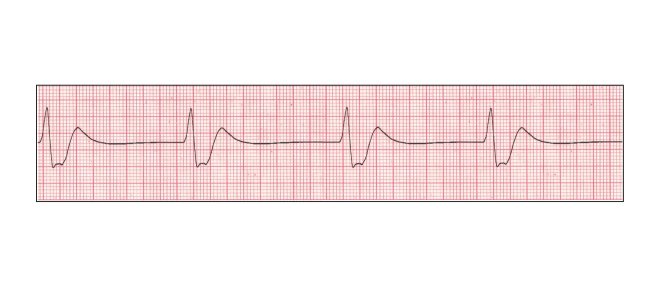the ventricular myocardium itself becomes the pacemaker, which is referred to as an escape rhythm called Idioventricular.
Ventricular signals are transmitted cell-to-cell between cardiomyocytes and not by the conduction system, creating
wide sometimes bizarre QRS complexes(> 0.12 sec). The rate is usually 20-40 bpm. If the rate is >40 bpm, it is
called accelerated idioventricular rhythm. The rate of 20-40 is the "intrinsic automaticity" of the ventricular
myocardium. It can be regarded as a "rescue plan" or "redundancy" built into the body.

Return to Home Page
